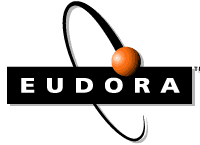
Eudora OSE is the Open Source Edition of one of the internet’s most pioneering and enduring applications. It is a re-imagining and re-implementation of classic Eudora features on top of the Mozilla Thunderbird codebase. It is more than just an extension, as certain functionality required changes to the core of the application.
New Features of Eudora Email Client:
Recent Mailboxes
Eudora 7.1 keeps a history of recently used mailboxes for your convenience. This menu item lets you open a mailbox or bring an open mailbox to the front.
Expanded Media for Alert Sound
The option to play a sound for alerts has been expanded to include a wide variety of sound formats, including MP3, MIDI, WMA, and even the audio inside of video formats such as MPEG, MWV, and AVI.
Play a sound for New Mail alerts
To display the Getting Attention options window
1.From the Tools menu, choose Options.
2.Scroll and click the Getting Attention icon.
Play a sound Filter action
To open the Filters window to create or modify a filter
1.From the Tools menu, choose Filters, or click on the Filters window’s tab if it is part of a visible tabbed window group. The Filters window appears, and any filters you have created are listed on the left.
2.To add a new filter, click New; to modify a filter, click an existing filter to select it.
3.Select the options for how you want the filter to be used: as an automatic filter to be invoked on any Incoming and/or Outgoing mail and as a Manual filter that can be invoked when you choose Filter Messages from the Special menu. Any combination of these options works.
4.Define the criteria for the filter by using the header item drop-down menus and the text fields to specify which header items should include a particular string of text. You can define two related terms for the criteria so that your filter is as specific as possible.
5.Define the action or actions to be taken on messages that fit the criteria and save the filters.
Filter Actions
For a filter you’re creating or modifying in the Filters window, all messages that match the filter criteria are acted on as specified with the Actions drop down menus. Each filter can do up to five things to a message that matches the criteria.
To take advantage of the enhanced selection of sound file playback, use the Play Sound action:
Play Sound (Sponsored and Paid modes only)—Plays the selected sound when messages are filtered. Now accepts a wide variety of sound formats.1.From the Tools menu, choose Filters, or click on the Filters window’s tab if it is part of a visible tabbed window group. The Filters window appears, and any filters you have created are listed on the left.The Filters window lets you create more complex, powerful filters that use multiple match conditions and perform multiple filter actions.


No comments:
Post a Comment